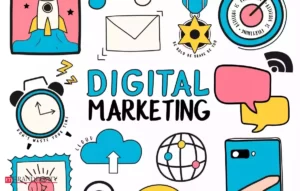Taking Advantage of Blockchain to Improve Elearning Experiences

Blockchain is a distributed ledger technology that is used to record and store data securely and transparently. It was first introduced as the underlying technology of Bitcoin, a cryptocurrency, but its potential uses have since expanded far beyond that.
In eLearning, blockchain technology can be used to create secure, tamper-proof records of learner achievements and credentials. This can help to solve some of the most pressing issues in the eLearning industry, such as the lack of standardization and the prevalence of fraudulent qualifications.
By using blockchain technology, learners can be confident that their achievements are being accurately recorded and verified. This can help to increase trust and transparency in the eLearning industry, making it easier for learners to demonstrate their skills and knowledge to potential employers.
In addition, blockchain technology can also be used to create decentralized eLearning marketplaces where learners can buy and sell courses and other educational content directly from each other. This can help to reduce the costs of eLearning and increase access to high-quality educational resources.
Blockchain technology has the potential to revolutionize the eLearning industry by providing a secure and transparent way to record and verify learner achievements and credentials and by creating new opportunities for learners to access and share educational content.
How Blockchain Technology Can Help Improve eLearning Outcomes
Blockchain technology has the potential to revolutionize the eLearning industry by providing new ways to improve learning outcomes. Here are some ways in which blockchain can help improve eLearning outcomes:
1. Verifiable credentials
One of the biggest challenges in the eLearning industry is the lack of standardization and the prevalence of fraudulent qualifications. Blockchain technology can help to solve this problem by providing a secure and tamper-proof way to record and verify learner achievements and credentials. This means that learners can be confident that their achievements are accurately recorded and verified, which can help to increase trust and transparency in the eLearning industry.
2. Personalized learning paths
Blockchain technology can be used to create personalized learning paths based on learner data. By analyzing data such as learner progress, learning style, and interests, blockchain algorithms can create customized learning paths that are tailored to each individual learner. This can help to improve learning outcomes by providing learners with the resources they need to achieve their goals.
Benefits of Implementing a Blockchain-Based Elearning Platform
Blockchain technology has been transforming various industries in recent years, and the education sector is not exception. Implementing a blockchain-based eLearning platform can offer several benefits to both educators and learners.
1. Enhanced Security
Blockchain technology is renowned for its ability to provide secure and tamper-proof data storage. With a blockchain-based eLearning platform, all educational data, such as certificates, student records, and course material, can be stored securely and be resistant to hacking attempts. This ensures the integrity of the data and protects it from malicious activities.
2. Improved Transparency
Transparency is a crucial aspect of the education system, and a blockchain-based eLearning platform can enhance it further. All the educational data stores on a distributed ledger, which means that all participants have access to the same data, and it is impossible to tamper with it. This enhances transparency and trust between educators and learners.
3. Cost-Effective
Implementing a blockchain-based eLearning platform can be cost-effective in the long run. With a decentralized system, there is no need for intermediaries, which can reduce administrative costs. Additionally, blockchain technology can automate various processes, such as certification issuance, which can save time and money.
4. Personalized Learning
A blockchain-based eLearning platform can also facilitate personalized learning experiences. Learners can have control over their learning data, such as progress and achievements, which can store on the blockchain. This data can be useful to create personalized learning paths based on their interests and preferences.
5. Accessibility
Blockchain technology can improve access to education by providing a secure and decentralized platform that is accessible to anyone with an internet connection. This can enable learners from all over the world to access quality education, which can have a significant impact on their lives.
Implementing a blockchain-based eLearning platform can offer several benefits, such as enhanced security, improved transparency, cost-effectiveness, personalized learning, and accessibility. As the technology continues to evolve, it is expected that more educational institutions will adopt it to improve the quality of education.
Potential Challenges of Integrating Blockchain Technology
While there are many potential benefits to integrating blockchain technology into various industries, there are also several challenges that need to consider. Here are some of the potential challenges of integrating blockchain technology:
1. Regulatory Challenges
One of the biggest challenges to integrating blockchain technology is the lack of clear regulations. Blockchain technology is still in its early stages, and many countries are yet to define their regulatory frameworks for it. This uncertainty can make it challenging for businesses to integrate blockchain technology.
2. Scalability Issues
Another challenge with blockchain technology is scalability. As the number of users and transactions on a blockchain network grows, the network can become slower and less efficient. This can limit the usefulness of blockchain technology in applications that require high transaction speeds and volumes.
3. Interoperability
Interoperability is another challenge that needs to address when integrating blockchain technology. Different blockchain networks may have different protocols and standards, making it difficult for them to work together seamlessly. This can limit the ability to use blockchain technology in larger applications that require multiple blockchain networks to work together.
4. Energy Consumption
Another potential challenge of integrating blockchain technology is the energy consumption to operate the network. Proof-of-work (PoW) consensus algorithms used by some blockchain networks require significant computational power, which can result in high energy consumption. This can lead to concerns about the environmental impact of blockchain technology.
5. Adoption
Finally, a major challenge with integrating blockchain technology adopts. Blockchain technology is still a relatively new concept, and many people may not understand it or hesitate to adopt it. This can limit the usefulness of blockchain technology in various applications.
There are many potential benefits to integrating blockchain technology into various industries, there are also several challenges that need to consider such as regulatory challenges, scalability issues, interoperability, energy consumption, and adoption. These challenges must address to realize the full potential of blockchain technology.
What Are the Best Practices for Implementing Blockchain in E-Learning Platforms?
When implementing blockchain technology in e-learning platforms, several best practices can help ensure a successful implementation. Here are some of the key best practices for blockchain elearning app development:
1. Define the Use Case
The first step in implementing blockchain technology in an e-learning platform is to define the use case. This involves identifying the specific problem that blockchain technology can solve and determining how it can integrate into the platform.
2. Choose the Right Blockchain
There are many different types of blockchain networks available, each with its strengths and weaknesses. It’s important to choose the right blockchain network for the e-learning platform based on factors such as scalability, transaction speed, and security.
3. Use Decentralized Storage
One of the main advantages of blockchain technology is its ability to provide decentralized storage. Using decentralized storage, such as IPFS (InterPlanetary File System), e-learning platforms can ensure that all data is secure, tamper-proof, and accessible to all users.
4. Create Smart Contracts
Smart contracts are self-executing contracts that can program to execute automatically when certain conditions meet. By creating smart contracts, e-learning platforms can automate various processes, such as certification issuance and payment processing.
5. Ensure Security
Security is critical for e-learning platforms, and blockchain technology can enhance security by providing a tamper-proof and transparent system. It’s important to implement security measures such as two-factor authentication, encryption, and regular security audits to ensure the platform is secure.
6. Develop a User-Friendly Interface
Finally, it’s important to develop a user-friendly interface that is easy to use and navigate. This can help ensure that users have a positive experience using the platform and are more likely to adopt it.
Implementing blockchain technology in e-learning platforms requires careful planning and consideration of various factors. By following these best practices for blockchain elearning app development, businesses can ensure a successful implementation and take advantage of the many benefits of blockchain technology in the e-learning industry.
Conclusion
The integration of blockchain technology in e-learning platforms has the potential to revolutionize the way education delivers and access. By using blockchain, e-learning platforms can provide a transparent, secure, and tamper-proof system that can benefit both students and educators. Blockchain technology can enable automated processes, enhance data security, and provide decentralized storage, which can help reduce costs and increase efficiency.
However, implementing blockchain technology comes with challenges, such as regulatory issues, scalability, interoperability, energy consumption, and adoption. Therefore, businesses must carefully consider these challenges and follow best practices for blockchain elearning app development to ensure a successful implementation. Despite these challenges, the potential benefits of implementing blockchain technology in e-learning platforms are significant and can have a profound impact on the education industry.







